On 9 September 2004, the legend that was Howard “Howie” Kale passed away at the age of 82. The founder of KARHO Farms, Howie was instrumental in changing the face of the Arabian world as we knew it. We share this article from his daughter Joanna “Jennie” Kale Long, which we ran in our Crabbet/Russian edition in 2008, as well as a separate post from Howie, about the true Arabian horse.

Howie Kale with Muscat
Howard “Howie” F Kale Jr, financial consultant, philosopher, businessman, dreamer and author, is ultimately and most significantly an Arabian horse breeder. He sees this role as both a great joy and a grave responsibility. “The Arabian horse is first of all a horse, the ultimate personification of an equine athlete in form and resultant function,” he says. “But it is the beauty and harmony of refinement, dryness, strength and coordination that is the hallmark of the Arabian breed. The superior Arabian must be respected for its structure and revered for its magnificence. It is and should be the world’s best riding horse.”
The legacy of the relationship between KARHO Farms and the Tersk Stud began 12 years before Howie’s first trip to Russia. In 1962, Howie and his father, Dr Howard Kale Sr, saw three imported Russian Arabian stallions, Negativ, Naborr and Pietuszok, while on a horse-buying trip to Poland. They greatly admired each of these stallions and purchased two Naborr daughters, Dornaba and Eskadra, each of whom became a National Champion in her own right as well as producing many National Champion offspring. In addition to these two mares, Howie and his father imported the Naseem grandson Silver Drift from Crabbet. Silver Drift became one of the foundation sires of the Kale programme and a legend as an individual and a sire in the United States.

Howie Kale, barely 20-years old, with the newly arrived Silver Drift (Raktha x Serafina) in 1963.
In the early 1970s, Howie and Dr Kale decided it was time to begin looking for an outcross stallion that could be utilised on their foundation mare herd, which consisted of domestic bloodlines infused with the blood of such imports as Silver Drift and Dornaba as well as Bask and Silwara through their son, Tornado. The specification of said outcross stallion was “as good as or better than, and complimentary to, the current US National Champion quality.”
They began to search the world in 1972, making trips to England, Spain, Egypt and Poland among other countries, but as of 1974, their quest was unfulfilled. However, during a business trip to London in October 1974, Howie was able to squeeze in a trip to Poland where he saw the newly imported stallion Namiet. This was Howie’s first experience seeing a Salon son. He was immediately very impressed and saw that the quality which was so apparent in Silver Drift was also evident in Namiet and so would consistently be obvious with the Naseem male line. Howie found a copy of the Arab Horse Society News, which contained an advertisement by the Backhouse family of Horsey Island, featuring the Russian import Nasmeshnik. By Arax, Nasmeshnik was a full brother of Namiet’s dam. Howie was immediately intrigued and made an appointment to visit the farm and see this promising stallion. He was not disappointed: Nasmeshnik possessed the big black eyes, strong quarters and quality structure that would become synonymous with the Arax line.

Dr Howard Kale and his wife Marybeth (left) with Howie and Sandy Kale
Howie knew that Naseem had been exported from Crabbet to Russia in 1936 and, after seeing these two magnificent stallions, both imported from Russia, he was determined to learn as much as possible about the Russian Arabian. He contacted his old friend James Allen, the premier bookseller in London on horse literature, to ask if he had any information on Russian Arabians. James replied that he did, but they were all written in Russian. Howie replied: “I will take everything you have on the Russian Arabians and a Russian dictionary!”
As Howie translated the books, his desire to understand the breeding programme in Russia, and as he would later discover, Tersk in particular, grew. He knew that if the Russians had exported such greats as Namiet to Poland and Nasmeshnik to England, they must possess the quality of horses that he and his father had been searching for. In December 1974, Howie requested the assistance of the Guinness, Mahon Bank in London to obtain permission for him to visit Tersk. After much anticipation, an invitation was issued in April 1975 and in June, Howie finally arrived at the Tersk Stud.

Mares at Tersk, photographed by Howie. This image was taken on a return visit in 1978.
After seeing the horses at Tersk, Howie was even more impressed with the Russian breeding programme and knew that among the horses at Tersk, he would find the next step for his breeding programme – that all important outcross that he and his father began searching for over three years earlier. On this first trip, Howie began negotiating the purchase of 15 pure-bred Arabian horses from Tersk. Both Howie and the managers at Tersk understood that the Russians would have to sell some of their very best horses to Howie in order for the Russian horses to succeed and dominate the show-ring in the US and around the world; anything less than the best would be doomed to failure. And so it was agreed that the Russians would sell some of the very best Tersk horses to Howie for importation to the US including the legendary stallions Nariadni and Prichal as well as the phenomenal mares Nariadnaia, Parketnaia and Pristan.

Nariadni
One thing Howie hadn’t anticipated, however, was how difficult it would be to have the Russian horses registered into the United States Arabian Horse Registry. In spite of working closely with the Russians on translations and having as much information available as possible, Howie underestimated the amount of opposition that there was to the registration of these horses. While prepared for much of the political resistance, he was appalled by the competitive hostility he encountered. As Howie was already one of the most respected and successful breeders in the US, much of the opposition came out of fear that the Russian horses would dominate the show-ring and breeding barn, giving Howie an even greater advantage.
Ever the philosopher, Howie met this opposition with quiet dignity and shocked the room when he publicly announced that he had already purchased 24 horses from Tersk and planned to use them in his breeding programme. “I have just spent many months of my life in Russia and I am 100% satisfied as to the authenticity and quality of the horses at Tersk,” he told the registry. “In my knowledge and judgment, the horses have a substantial contribution to make to Arabian horse breeding in the US and the world.” But no conclusion was reached and the debate continued.

Aswan daughters at KAHRO
Undaunted by the registry’s failure to reach a decision, Howie forged ahead and his idea that the expected magnitude of his relationship with Tersk would require a stud farm in Western Europe was now fast becoming a necessity. Thus, in partnership with Robbie den Hartog Sr, Howie created the Kossack Stud in Amsterdam, Holland. Robbie owned the land and Howie owned the breeding stock: it was a relationship that worked perfectly.
In May 1976, after testing clear for piroplasmosis in Russia, Howie flew the first horses from the Kossack Stud to New York. Five failed quarantine in New York by testing positive for piroplasmosis, the exceptional stallion Prichal among them. These five were sent to the Dominican Republic and eventually exported to Brazil, where Prichal became a sire of immense significance and his get are still revered and prized as some of the most valuable in Brazil. The 19 horses that passed quarantine were transported to Dr Kale’s farm in Kirkland, Washington. After this trip, it was clear that the Kossack Stud would not only be the farm where Howie could keep and breed Russian horses, but it would also serve as a place for him to keep and treat piro-positive horses with the hope that they would eventually make it to the US.
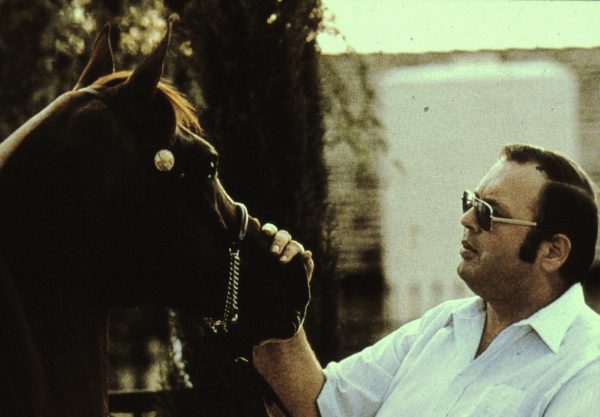
Howie with Muscat
Although the American Horse Registry and WAHO had yet to accept the Russian Arabian Stud Book, Howie bought 13 horses from the Tersk sale in June 1976 and a further 19 at the Tersk sale in June 1977. Howie had regularly attempted to buy the outstanding chestnut stallion Muscat* and had been flatly refused. Having been told that Muscat was not for sale for any price, Howie replied: “If he is not for sale for money, then what do you want more than him?” And so in July 1977, negotiations began on an exchange: two of the finest Standardbred stallions, Lindo Hannover and Centennial Way, valued at over $1,000,000 each, for Muscat.
Howie agreed and in January 1978, Muscat was exported to New York before journeying to his new home in Scottsdale. Everyone who saw Muscat agreed that the stallion embodied a grace and majesty that transcended breed type – he was more than an exquisite Arabian, he was an exquisite horse.

Howie and Muscat
In 1978, Howie bought 17 more horses at the Tersk Sale in June and, along with recognising his dream of importing the next step in his breeding programme, Howie also began work on another longstanding dream, to build the greatest horse farm in the world and so KARHO, Kale’s ARabian HOrses, was born. In an exciting and fulfilling year for Howie, both the US Arabian Horse Registry and WAHO finally approved the Russian Arabian horses for registration meaning that they could now be shown in the US.
After buying a further 15 horses from the Tersk Sale in June 1979, Howie flew to Washington to show the first two newly US registered Russian Arabian horses, Nariadni and Najada, at the Washington State All Arab Show, one of the largest Arabian shows in the Northwest. As expected Nariadni, who possessed big, black eyes, strong quarters and quality structure, was named Grand Champion Stallion while Najada, out of a full sister of Nasmeshnik, was named Grand Champion Mare. The show-ring would never again be the same. From that moment on, Arabian horse enthusiasts became enchanted by the beauty, grace and motion of the Russian horses: they honoured their quality and their magnificence and began to embrace them as the next step in their own breeding programme.
In July 1979, Howie finally unveiled the horse that everyone was talking about: Muscat. He was easily named Champion Stallion at the competitive Minnesota Summer Show and then Overall Supreme Champion of the show. At this same show, the exquisite mare Nariadnaia, who possessed the Aswan* type coupled with the size and quality of her mother, Neposeda, appropriately called “The Queen of Tersk,” earned the honour of Champion Mare.

KAHRO
While each of these shows represented a great victory in bringing the Russian Arabian horses to the forefront of the US show-ring, Howie had already set his sights on a larger goal: winning the Triple Crown of Scottsdale Champion, Canadian National Champion and US National Champion all in the same year with Muscat. This feat had only been accomplished once before when, in 1966, Howie won the Triple Crown with the exceptional mare Dornaba.
In 1980, with a large billboard proclaiming “Welcome to Muscat’s-dale” greeting visitors on the way to the Scottsdale Show, it was obvious to all that this would be KARHO’s year. Muscat succeeded becoming the first stallion to ever win the Triple Crown, beating such American greats as Bey Shah and Ruminaja Ali*, once again with Howie on the lead. More importantly to Howie, the first Muscat foals hit the ground in March 1980 and they were everything Howie both hoped and believed they would be.
Throughout the 1980s, the Russian horses and their offspring dominated the show-ring winning thousands of championships and numerous National Championships in both the United Sates and Europe. The phenomenal success of the Tersk-KARHO relationship could be seen in many of these great horses such as the exquisite mare Amber Satin (Muscat* x Satin Silver by Tornado) bred by the Kale family and crowned both World Champion and US National Champion Mare in 1988.

Howie overseeing one of the KARHO sales
Howie has always maintained that: “The Russian horses are the antitheses of the theory behind pure Polish, straight Egyptian, all Spanish, pure Crabbet or anything other than pure Arabian horse. The Russian horses are a careful selection of, and improvement on, some of the world’s greatest Arabian horses, regardless of their country of origin.” All the pure-bred Arabian horses of the world are descended from horses exported from the Arabian desert and the breeders at Tersk took some of the best from France, England, Poland and Egypt and used them for the purpose of breeding better and better horses. Thus the value of the Russian horses is found in themselves, in their genetic characteristics and in their ability to pass on, through inheritance, these superior traits.
Today, Howie’s dedication to select and unite the pieces of perfection from all bloodlines is still his primary goal. The horses have changed throughout the years and are always improved upon in the pursuit of perfection. Additions to the mares and stallions of KARHO have been and will be made when necessary for the ongoing enhancement of the KARHO Arabian.
Howie made a total of 29 trips to Russia between 1975 and 1985 and it is still a country that he holds dear. After winning the Triple Crown with Muscat and realising his dream of building KARHO, Howie retired from the show-ring to focus on his first love of horse breeding and his newest love, Sandra Kale, whom he married in 1980. Today, his daughter Joanna Kale, an accomplished horsewoman in her own right, is successfully leading a reemergence of the Tersk-KARHO Arabian horse in the show-ring and employs the same dedication and philosophy of horse breeding as her father.

Jennie and Howie.
Currently, the premiere stallions at KARHO are HK Crown Prince, HK Marcello, and Renaissance SS. HK Crown Prince is by Muscat and out of Jewel Drift, the only daughter of the exquisite Dornaba. Like his sire, he embodies the structure, quality of bone and function that transcend breed type and endear him to horsemen of all types. At 22 years old, it is his daughters, crossed with HK Marcello and Renaissance SS, that are carrying on the majesty of KARHO. By Marwan Al Shaqab* and out of a full sister to Amber Satin, HK Marcello combines the exceptionally large black eyes, refinement, length and shape of neck with the structural correctness that is expected from the superstar combination of his parents. Renaissance SS is one of the youngest and most structurally correct of the Padron* sons, combining the show attitude and charisma of his sire with the size, structure and beauty of his dam Tarlina, herself a third-generation bred KARHO mare. As well as being an exceptional sire, Renaissance SS has proven himself an exceptional show horse, winning blue ribbons and championships in both halter and western pleasure performance classes.
These days, the Arabian horse industry recognises the Russian and Russian-related Arabian as the viable force it is. Many of today’s champions owe much of their quality and value to their Russian-bred ancestors and the current definitions for excellence, quality and value in the Arabian breed have become synonymous with the Russian and Russian-related Arabians, the combination that has created and sustained the legacy, beauty and function apparent in the horses of KARHO.


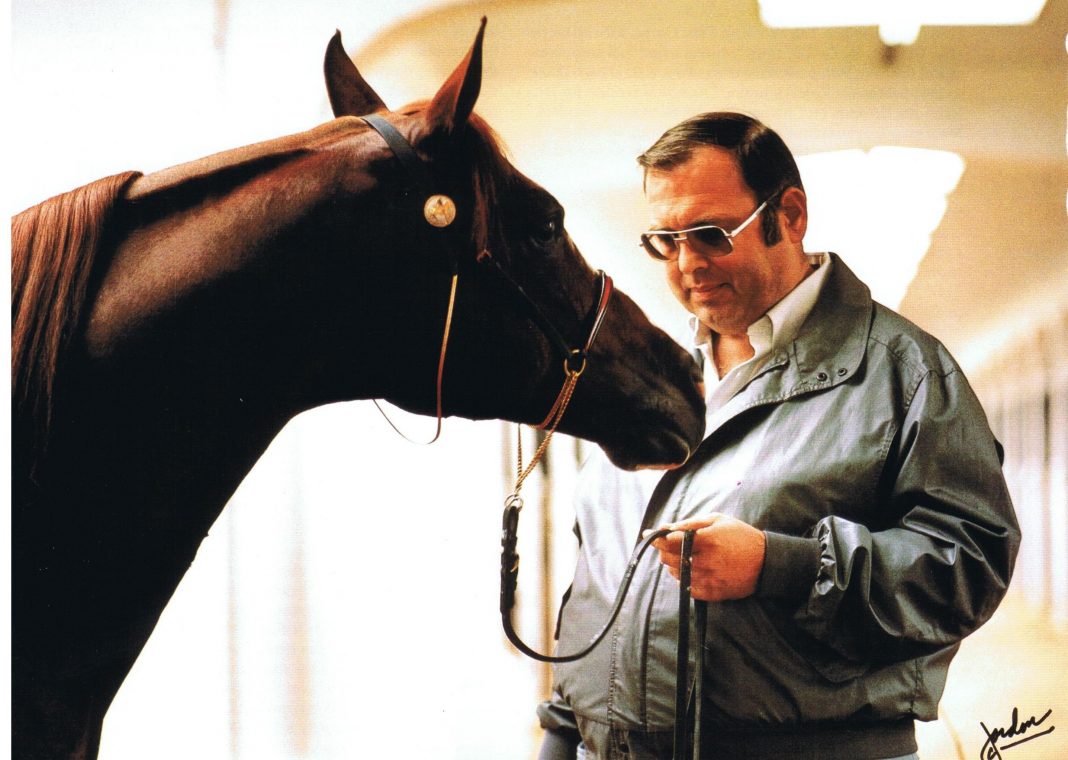
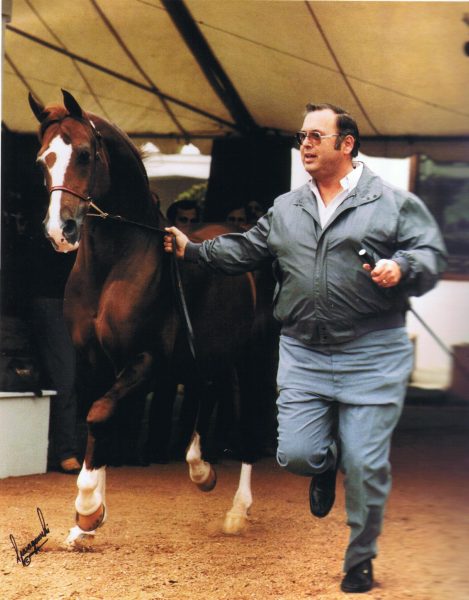
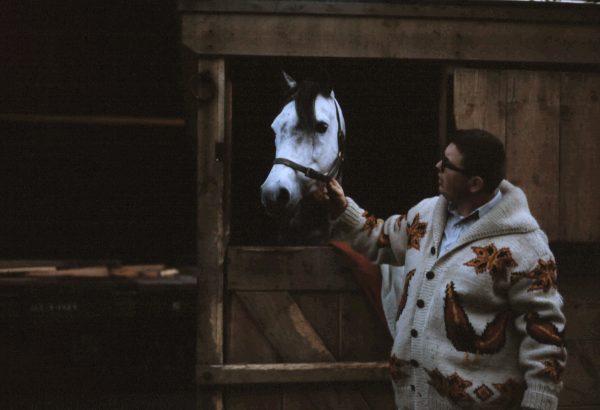
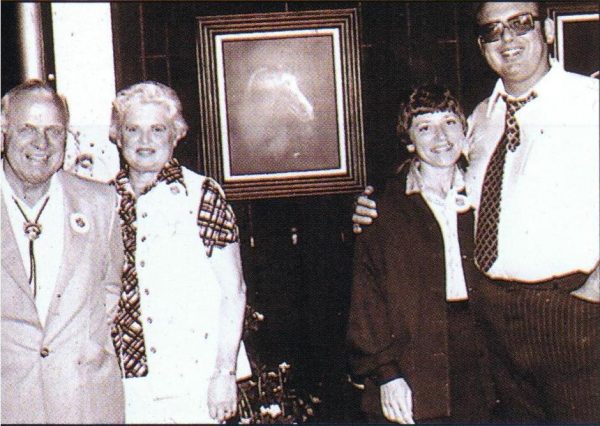
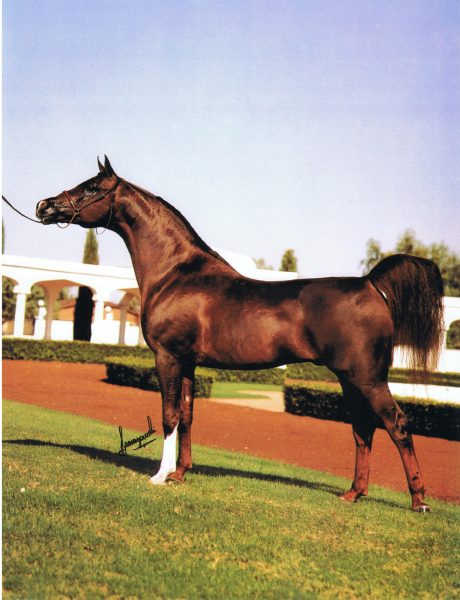

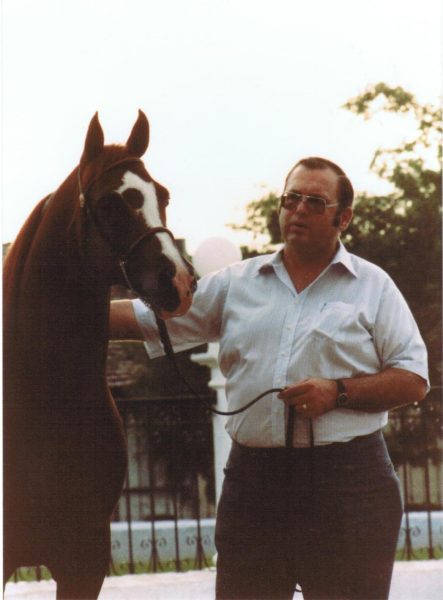
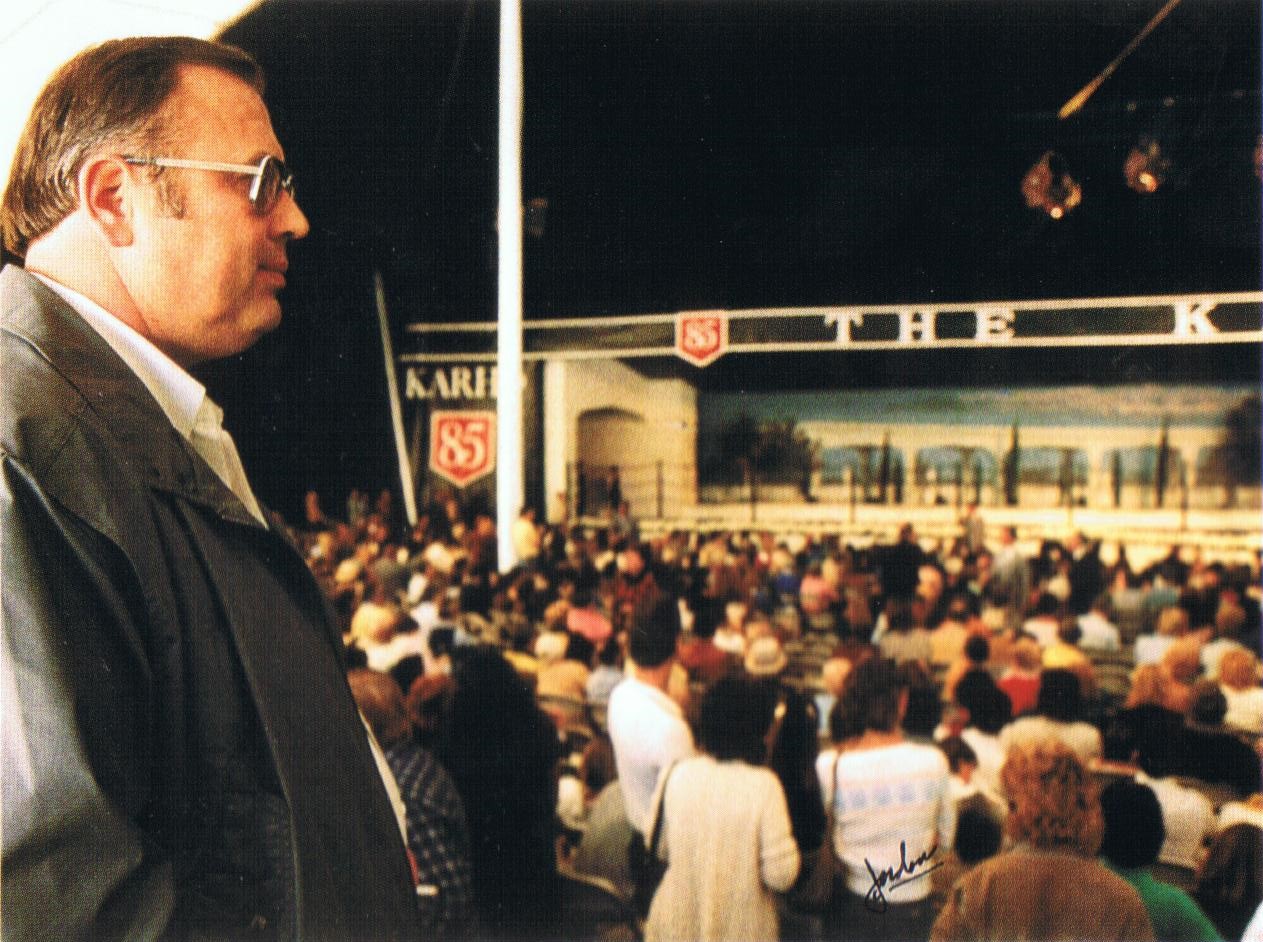
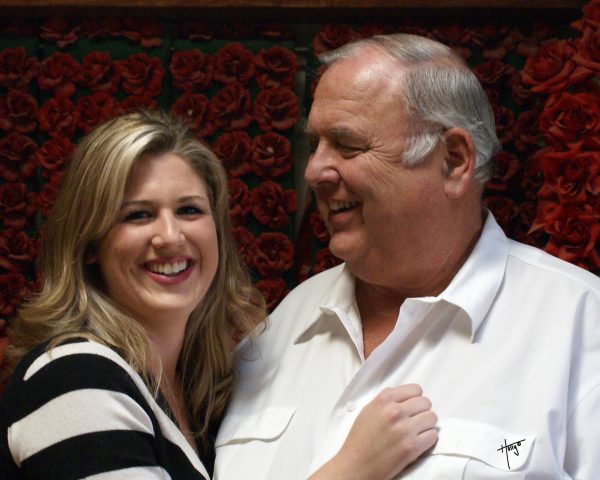
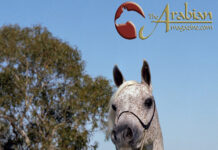
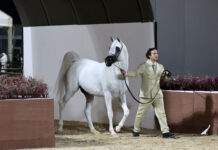
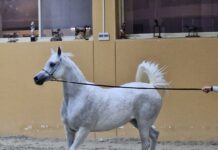






[…] As part of our tribute to Howard ‘Howie’ Kale, who passed away on 9 September 2024 at 82 years of age, we share his words from our 2008 edition, where he talks about the true Arabian horse. For the full feature, click here. […]